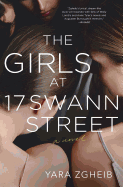
| Publisher: | St. Martin's Press | |
| Genre: | Women, Psychological, Family Life, General, Fiction | |
| ISBN: | 9781250202444 | |
| Pub Date: | February 2019 | |
| Price: | $27.99 |
| Starred | Fiction |
by Yara Zgheib
The Girls at 17 Swann Street is a haunting first novel from Yara Zgheib. It's written in a lyrical, poetic style that contrasts intriguingly with the blunt subject matter--one woman's descent into anorexia.
Anna was a professional ballerina in Paris, always just a bit too short, a tad too heavy, for the lead roles. Soon after her marriage to the love of her life, Matthias, he was offered a job in St. Louis, Mo., and Anna willingly followed him. But she became lonely without her dancing and her friends; her incipient eating disorder tendencies began to spiral out of control. She exercised more and ate less, obsessing over every tiny bite of apple until she was a mere wisp of her former self. After months of pleading, Matthias convinces Anna to move to 17 Swann Street where she will receive round-the-clock treatment for anorexia. Battling her demons as she's faced with plates of food she's forced to eat, therapy sessions she unwillingly endures and fellow patients with whom she must coexist, Anna chronicles her struggles with, and beyond, anorexia.
Fascinating and dreamlike, this debut is a look into the mind of someone who can see themselves as fat at 88 pounds. Incorporating flashbacks of Anna and Matthias's seemingly perfect life in Paris and shocking facts about the side effects of starvation, The Girls at 17 Swann Street is compelling, sure to keep the reader rooting for Anna's survival. --Jessica Howard, bookseller at Bookmans, Tucson, Ariz.
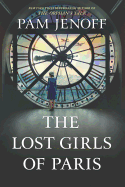
| Publisher: | Park Row | |
| Genre: | General, Literary, Fiction, Historical, Jewish, World War II | |
| ISBN: | 9780778330271 | |
| Pub Date: | January 2019 | |
| Price: | $16.99 |
| Fiction |
by Pam Jenoff
Returning to the World War II era, Pam Jenoff (The Orphan's Tale) once again takes inspiration from true events to craft an engrossing narrative capable of reaching the hearts and souls of her readers. The Lost Girls of Paris pays homage to the women who covertly contributed to the Allied resistance in France.
In 1946, a year after the war has ended, Grace Healey finds an abandoned suitcase in Grand Central Terminal. Inside the suitcase are a dozen photographs of women who pique Grace's curiosity and send her on a self-imposed mission to discover the owner of the suitcase and the identities of the women.
Three years earlier, Eleanor Trigg is a secretary with the British Special Operations Executive (SOE) when she suggests using women as operatives because they will blend in better than men. Suddenly she finds herself in charge of a secret division of the SOE, recruiting, training and deploying young women into France as couriers and radio operatives. One of those women is Marie, a single mother struggling to keep her daughter safe in a world that's gone mad.
As Grace's investigation cracks open Eleanor's world, a captivating mystery evolves in the midst of love, war, friendships and heroics. While some elements of Jenoff's story remain vague--why exactly is Grace so driven to find the photo identities in the first place?--the complexities of the characters, the richness of the atmosphere and the swift pacing keep the reader engaged and invested. The Lost Girls of Paris is a beautiful celebration of women and their strength in the darkest of times. --Jen Forbus
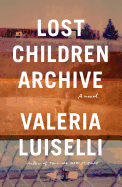
| Publisher: | Knopf | |
| Genre: | Hispanic & Latino, Family Life, General, Literary, Fiction | |
| ISBN: | 9780525520610 | |
| Pub Date: | February 2019 | |
| Price: | $27.95 |
| Fiction |
by Valeria Luiselli
In her spellbinding novel Lost Children Archive, Valeria Luiselli (Tell Me How It Ends) weaves a complex narrative from the migrant crisis on the southern U.S. border.
At the story's center is an unnamed family traveling from New York City to Arizona. The mother and father are sound documentarians who met while recording a soundscape of the city. Now the father is focusing on lost Apache culture, determined to visit their homeland and record what he calls an "inventory of echoes." The mother is focusing her journalistic skills on the migrant crisis along the U.S.-Mexico border, specifically on finding the two lost children of her Latina friend back in New York. The couple's children, a five-year-old girl and 10-year-old boy, try to make sense of life on the road. Along the way the family shares stories, music, books and boxes full of their stuff. The point of view shifts from the mother to the boy and back again toward the end.
As much as the novel has large political themes, it begins as an astute study of marriage and family. Then, as the family travels farther on, they find run-down towns strewn with the relics of late capitalism, and a citizenry afraid of "brownness," ready to blame poorer nations for their own problems. The parents become increasingly obsessed with their respective projects, so the boy hatches a plan of his own to get his parents' attention, leading to the novel's harrowing conclusion.
Lost Children Archive is a haunting novel that illuminates timely issues. --Scott Neuffer, writer, poet, editor of trampset
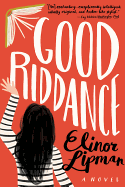
| Publisher: | Houghton Mifflin Harcourt | |
| Genre: | Women, Family Life, Humorous, General, Literary, Fiction, Jewish | |
| ISBN: | 9780544808256 | |
| Pub Date: | February 2019 | |
| Price: | $25 |
| Fiction |
by Elinor Lipman
Good Riddance, Elinor Lipman's (The Inn at Lake Devine, On Turpentine Lane) 11th comic novel, begins with a simple moment of housekeeping zeal. As Daphne Maritch tidies up her apartment, she tosses the Pickering, N.H., high school class of '68 yearbook in her Manhattan recycling bin. The generously inscribed annual had belonged to her recently departed mother, a dedicated teacher and yearbook adviser, who received it as a gift from her students and updated it with sometimes snarky commentary. Daphne, however, feels no joy about the book, so she's glad to see it go. Thus begins a circuitous, madcap path from regret to joy, a journey in the style Lipman fans will recognize with delight.
When Geneva, a "boundary challenged chatterbox" neighbor, plucks the yearbook from the trash and informs Daphne that as a filmmaker she sees rich possibilities in Mrs. Maritch and the class of '68, Daphne is conflicted. Although she's skeptical, she muses "maybe this was exactly what my mother would have wanted." Soon everyone is weighing in, including Jeremy, the handsome actor across the hall, and Daphne's dad, who moves to New York from Pickering to launch his new single life. The plot thickens when Geneva convinces Daphne to attend a PHS '68 reunion, where she learns shocking news from decades past. But it's a Lipman hallmark that good things happen to good people; the unsympathetic characters may not suffer but neither do they win. It's good riddance to dismay and hello to happiness in this witty romantic comedy. --Cheryl Krocker McKeon, manager, Book Passage, San Francisco
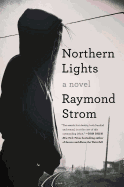
| Publisher: | Simon & Schuster | |
| Genre: | Literary, Coming of Age, Fiction, LGBT, Gay | |
| ISBN: | 9781501190292 | |
| Pub Date: | February 2019 | |
| Price: | $26 |
| Fiction |
by Raymond Strom
It was just by accident that Shane Stephenson stopped getting haircuts. His straight blond locks haven't even reached his shoulders the first time he's pushed into a wall and called names. Once he graduates high school in 1997, six months after his father's death, his disapproving uncle throws him out of the house.
Heading to college in Minneapolis, Shane stops in the declining town of Holm to see the mother who abandoned him, only to find her gone. With his slim build and androgynous look, Shane finds plenty of foes in Holm, a "boys will be boys" place where folks celebrate their "heritage" with the Confederate flag, kids struggle to escape and the drug trade flourishes.
In Northern Lights, debut novelist Raymond Strom paints an aching portrait of a young man searching for a sense of self and belonging. While looking for clues in Holm, Shane finds a circle of friends and adversaries who push his boundaries and compel him to confront who he wants to be. When his closest companion comes up with a plan to take down the bigot tormenting Shane, the tragic fallout further shapes him and his future.
Strom creates a fantastic sense of place and how it works on his characters, particularly with respect to the gritty underbelly of substance abuse and financial straits. Shane is an unforgettable hero in his own story, both lost and possessing a vulnerable inner strength. Through him, Strom demonstrates how connections can be forged even in the unlikeliest of places. --Lauren O'Brien of Malcolm Avenue Review
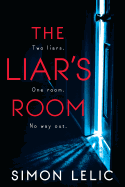
| Publisher: | Berkley | |
| Genre: | Psychological, Crime, Suspense, Thrillers, Fiction | |
| ISBN: | 9780440000433 | |
| Pub Date: | January 2019 | |
| Price: | $16 |
| Mystery & Thriller |
by Simon Lelic
When Adam Geraghty walks into Susanna Fenton's office for a therapy session, she can't shake the feeling that she knows him. It's unsettling, as Susanna reinvented her life 14 years ago and maintains no connection to the woman she used to be. Though she tries to be as honest as possible in every other way, not even her daughter, Emily, knows anything about her previous life, and she's determined to keep it that way. As Adam's questions become more intimate, then threatening, Susanna realizes that Emily is in danger, as well as her own carefully constructed identity. While Susanna tries to outthink Adam before it's too late, readers learn more about her tragic past--a troubled son, a checked-out husband, a public scandal--and try to figure out exactly how close Adam might be to it.
The Liar's Room by Simon Lelic (The New Neighbors) is a well-paced, plot-driven thriller that examines family dynamics and the human tendency to place blame. Susanna's new career as a counselor seems like a way to correct her past and reconcile with her guilt, hoping now to help others if she couldn't help her son. Lelic asks readers to consider to what extent a parent is culpable for her child's actions, and he examines how women are often vilified by the media's desire for a scapegoat. As the novel progresses, what is revealed becomes increasingly darker and more disturbing, though not gratuitous, resulting in a compelling and thoughtful read. --Katy Hershberger, freelance writer and bookseller
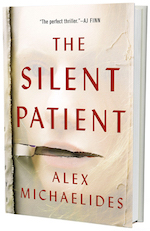
| Publisher: | Celadon Books | |
| Genre: | Psychological, Suspense, Thrillers, Fiction | |
| ISBN: | 9781250301697 | |
| Pub Date: | February 2019 | |
| Price: | $26.99 |
| Mystery & Thriller |
by Alex Michaelides
Alex Michaelides's The Silent Patient lures readers in with a tantalizing premise: a woman has murdered her husband in cold blood, and then refuses to say why. The intricately plotted story, inspired by Greek mythology, is akin to a siren song, enticing, but with an ominous undertone and hints of deception.
But first, the facts:
"Alicia Berenson was thirty-three years old when she killed her husband. They had been married for seven years. They were both artists--Alicia was a painter, and Gabriel was a well-known fashion photographer."
Shortly before midnight one evening six years earlier, police arrived at the Berensons' home to find Alicia blood-splattered, with a gun on the floor and Gabriel tied to a chair. And most of his face missing, from multiple bullet wounds. Alicia's fingerprints were the only ones on the gun. Alicia had deep knife cuts on her wrists and had lost a significant amount of blood, but she survived and hasn’t spoken a word since the night of the murder.
Now forensic psychotherapist Theo Faber wants to change that. He lands a position at the Grove, the secure psychiatric facility in North London where Alicia was admitted after her murder trial, and volunteers to treat her. He believes he can break through to her and get her to speak--and that clues to unlocking her secrets lie within her self-portrait, a painting titled Alcestis.
In the painting, Alicia depicts herself "in the days after the murder, standing before an easel and a canvas, holding a paintbrush. She is naked.... [B]lue veins visible beneath translucent skin, fresh scars on both her wrists.... [The paintbrush]'s dripping red paint--or is it blood?"
Theo knows there's a reason Alicia named her painting after the Greek myth about a woman who offers to die in place of her husband, but how does it pertain to Alicia's situation, when she's alive and her husband is the one who died? Why did she kill Gabriel when, according to her old diary entries that appear throughout the novel, he was the love of her life?
Against his colleagues' advice, Theo pushes to reduce the dosage of Alicia's medication to increase her lucidity. He gives her painting materials, thinking perhaps she can communicate through art, if not words. The results are not what he expects.
Michaelides's knowledge of Greek mythology and past experience working in a psychiatric unit allow him to write with confidence, in his debut novel, about the story of Alcestis and the delicate nature of treating patients. The doctors, the staff, the other patients in the facility--they all have a ring of truth, just flawed and wary and unpredictable enough to seem like real inhabitants of such an environment. There are nuggets of psychological insight throughout, such as Theo's theory on the memories of babies: "[B]abyhood is not a time of bliss; it's one of terror. As babies we are trapped in a strange, alien world, unable to see properly, constantly surprised at our bodies, alarmed by hunger and wind and bowel movements, overwhelmed by our feelings. We are quite literally under attack." It's a wonder everyone doesn't end up in psychiatric care.
Alicia is decidedly a cipher and yet alluring. She has Theo's full attention, and ours. During the therapy sessions, Michaelides puts readers right there in the room, on the edge of their seats and leaning in, waiting to see whether or not this beautiful enigma reveals all. But Alicia is mercurial and rebellious, even in silence. She can express rage and scorn via her eyes, fingers, her whole body. She speaks volumes without saying anything.
Michaelides keeps the plot humming along, with impactful sentences and short chapters that straitjacket readers into flipping those pages. Even as Alicia's case becomes more perplexing, it's always clear Michaelides knows exactly what he's doing as he leads us toward revelations that will be worth the wait. No surprise, then, that new Macmillan imprint Celadon chose this thriller to be its launch title, and movie rights have been sold. The Silent Patient isn't quiet at all. It loudly announces that Alex Michaelides is a new talent in the field of psychological thrillers. --Elyse Dinh-McCrillis
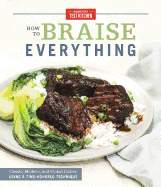
| Publisher: | America's Test Kitchen | |
| Genre: | Slow Cooking, Cooking, Casseroles, Regional & Ethnic, Low Budget, Methods, Courses & Dishes, Soups & Stews, International | |
| ISBN: | 9781945256714 | |
| Pub Date: | February 2019 | |
| Price: | $35 |
| Food & Wine |
by America's Test Kitchen
How to Braise Everything, the latest in the America's Test Kitchen series, goes beyond your mom's Sunday pot roast in more than 200 recipes from around the globe.
Browse the enticing photos accompanying every recipe and try to decide where to start. Each is a mouth-watering image of meat, fish, beans or vegetables--from Italian pot roast to the (significantly!) updated green bean casserole. So, what's braising? Cooking "a main ingredient... in a closed environment to break down its proteins or fibers and achieve ultratender results." The opening pages of the almost 400-page cookbook are crucial: here is the science of braising, the importance of liquid and why to embrace both hands-off cooking and the magic of finishing touches.
While the editors include vegetable sides, including beer-braised cabbage and classic mashed potatoes, How to Braise Everything is a carnivore's cookbook. The Moroccan Braised White Beans are prepared with lamb; the Sichuan Braised Tofu, with chicken broth and ground beef. A "Why This Recipe Works" sidebar for every recipe includes a bit of history, prep tips and suggestions on substitutions and side dishes.
How to Braise Everything will inspire even novice cooks to prepare hearty, satisfying meals with this simple and foolproof cooking technique. --Cheryl Krocker McKeon, manager, Book Passage, San Francisco

| Publisher: | Liveright | |
| Genre: | Biography & Autobiography, State & Local - Midwest, American Government, Public Policy, City Planning & Urban Development, United States, Personal Memoirs, Local, Political, History, Political Science | |
| ISBN: | 9781631494369 | |
| Pub Date: | February 2019 | |
| Price: | $27.95 |
| Starred | Political Science |
by Pete Buttigieg
Growing up in South Bend, Ind., Pete Buttigieg never expected to become the mayor of his hometown. But at 37, after a winding journey that took him to Harvard, Oxford and Afghanistan, Buttigieg not only lives in his childhood neighborhood, he works for the place that has shaped him. His memoir, Shortest Way Home, chronicles his own story alongside that of South Bend's post-industrial struggle and its gradual revitalization.
The heart of the book is his on-the-ground political education in the Midwest. First driving through cornfields to knock on doors for Senator Barack Obama, then running for state treasurer of Indiana (and getting trounced), Buttigieg traces his growing interest in holding public office and using any power he might gain to do some good. He recounts his campaign for mayor and the optimism of taking office. But he is also candid about the job's frustrations (no politician can please everyone) and heartbreaks (his grief for local victims of gun violence and recently tightened immigration laws).
His warm, thoughtful narrative voice reflects his approach to local politics: seeing people as individuals who are also part of their community and figuring out how to make their lives better. Buttigieg's story is particular to South Bend, but it offers insights for those working to lead cities around the country. Shortest Way Home is a meditation on how to govern and live well, and how one man came home "to find belonging by making myself useful there." --Katie Noah Gibson, blogger at Cakes, Tea and Dreams
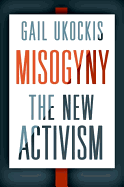
| Publisher: | Oxford University Press | |
| Genre: | Family & Relationships, Feminism & Feminist Theory, Prejudice, Social Science | |
| ISBN: | 9780190876340 | |
| Pub Date: | February 2019 | |
| Price: | $24.95 |
| Social Science |
by Gail Ukockis
Early in Misogyny: The New Activism, author, educator and social worker Gail Ukockis sets the tone: "We have work to do! You are going to be one kick-ass (or genteel) advocate for women now!" Misogyny, and the oppression of others often denied their dignity, can be a topic that does not always offer much hope. Ukockis approaches these issues forthrightly and optimistically: "if I did not believe in positive social change, I would not be wasting my time writing this book."
Ukockis defines misogyny as the hatred of women, both by individuals and by society, and then enumerates this hatred's effect on communities, through discussions of street harassment, beauty bias, employment issues, transphobia, ableism, rape culture, toxic masculinity and intersectionality. These issues have a particular poignancy and relevance following the election of Donald Trump in 2016 and the emergence of the #MeToo movement.
Each section includes useful action steps for activists and allies, as well as case studies that either provide concrete examples of how misogyny harms individuals or how activism has helped ameliorate some of these harms. The book concludes with steps to become more involved generally, partnering with other social justice movements, speaking out or writing, or working with politicians. Here, critically, the author emphasizes being intentional and circumspect, as "thoughtful activism, then, requires more than an automatic reaction to a perceived problem. Planning one's actions by considering the possible consequences is essential." --Evan M. Anderson, collection development librarian, Kirkendall Public Library, Ankeny, Iowa
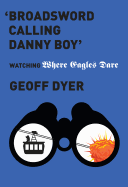
| Publisher: | Pantheon | |
| Genre: | History & Criticism, Art, Drama, Film, English, Irish, Scottish, Welsh, European, Performing Arts, Film & Video | |
| ISBN: | 9781524747572 | |
| Pub Date: | February 2019 | |
| Price: | $22 |
| Performing Arts |
by Geoff Dyer
Geoff Dyer is a remarkably versatile writer, seemingly able to cover any subject with wit and feeling. 'Broadsword Calling Danny Boy' is a return to the film criticism that proved so successful in Zona, his book about the art cinema masterpiece Stalker. Dyer's selection here, the decidedly less highbrow 1968 World War II action extravaganza Where Eagles Dare, receives scene-by-scene scrutiny with an eye to what is both delightful and ridiculous about the Alpine adventure.
Dyer's dissection is frequently personal, referencing the film's important place in his childhood. The book is packed with footnotes, many of them entertaining anecdotes from the author's youth. However, this is not merely a nostalgic reading. Instead, the surprisingly complicated plot of the film--involving parachuting behind German lines, infiltrating a Nazi castle in the snowy mountains, and escaping in a famous sequence featuring cable cars--serves as a jumping-off point for mini-essays. Their subjects are plentiful, including Clint Eastwood's peculiarly un-emotive brand of acting, the enduring appeal of the "getaway" and the film as an allegory for Brexit. On the latter point, Dyer observes: "Everything in the film is German. It's practically an advert for the superiority of German manufacturing.... We won the war, the film concedes, but lost the manufacturing peace."
It is not necessary to have seen Where Eagles Dare to enjoy 'Broadsword Calling Danny Boy', though it may add to your pleasure. The appeal of the book is watching Dyer go off in a dozen clever directions, finding humor and insight in unexpected places. --Hank Stephenson, bookseller, Flyleaf Books, Chapel Hill, N.C.
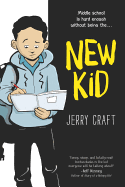
| Publisher: | HarperCollins | |
| Genre: | School & Education, General, Social Themes, New Experience, Juvenile Fiction, Comics & Graphic Novels, Prejudice & Racism | |
| ISBN: | 9780062691200 | |
| Pub Date: | February 2019 | |
| Price: | $21.99 |
| Starred | Children's & Young Adult |
by Jerry Craft
Twelve-year-old Jordan wanted to go to art school, but instead, his parents enroll him in "one of the best schools in the entire state." Although his father expresses concern about Riverdale Academy Day's glaring lack of diversity, his mother insists that with Jordan's smarts, art school "would be such a waste." On Jordan's first day, he's picked up outside his family's Washington Heights apartment by his RAD-assigned "guide," Liam--well, Liam's asleep in the back seat of his father's luxury SUV. At RAD, Jordan stands out amid chauffeur-delivered students, manicured lawns, fancy fields and "a lot of pink." Thankfully, Liam proves his guiding mettle and becomes a true friend.
Even with Liam's support, however, Jordan's RAD adjustment is a constant challenge: learning social hierarchies, avoiding gossips and bullies--and figuring out where he might belong on a campus with so few students of color. As difficult as navigating relationships with peers might be, teachers are an even greater provocation. Jordan's homeroom teacher can't distinguish one African American student from another and the librarian can suggest only stereotypical titles to black students. Art helps Jordan survive--his sketchbook is filled with daily experiences, his sensitive interpretations far more astute than his tween years would indicate.
Award-winning author/illustrator Jerry Craft confronts elitism, microaggression, racism, socioeconomic disparity and white privilege in a familiar setting. Craft also accentuates the many assumptions we all make about one another, regardless of background. Presented in predominantly full-color, richly saturated panels, Craft distinguishes Jordan's sketchbook entries in black-and-white pencil drawings, their stark simplicity underscoring their uncomplicated wisdom. Craft's messaging leans toward heavy-handed, but his preteen audiences will undoubtedly recognize and empathize with Craft's memorable cast. --Terry Hong, Smithsonian BookDragon
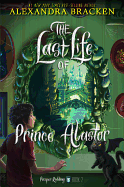
| Publisher: | Disney-Hyperion | |
| Genre: | Fantasy & Magic, Family, Juvenile Fiction, Action & Adventure, Siblings | |
| ISBN: | 9781484778180 | |
| Pub Date: | February 2019 | |
| Price: | $16.99 |
| Children's & Young Adult |
by Alexandra Bracken
"What evil can come from a choice made with a pure heart and the best of intentions?" What evil, indeed.
When last we saw Prosper Redding, his sister, Prue, had been abducted and brought to the realm of fiends (Downstairs). Determined to save her, Prosper makes a deal with Alastor, the malefactor demon currently residing in his body: Alastor will help Prosper save Prue, and return them to the human realm, in exchange for Prosper's "eternal servitude Downstairs upon [his] mortal death." Considering that Prosper's family has already "made a deal with a demonic parasite"--Alastor--"to destroy their rivals and pave their future with gold," Prosper accepts. Downstairs, the two begin a fact-finding mission to discover Prue's whereabouts and run into the "witchling" Nell, who is also trying to find Prue. Together, they travel through a (literally) dark land inhabited by trolls, howlers, goblins and, surprisingly, elves. But their time runs short as Downstairs falls victim to the Void and is slowly unmade.
Bracken's follow-up to The Dreadful Tale of Prosper Redding is as devious and delightful as the first. The adventure is engrossing, creepy and often very funny, as when Prosper accuses the malefactor of not seeing beauty: "Not true," Alastor replies, "I... see it in the gleam of blackpennies, the dark horizon of Downstairs, and the steaming blood of my enemies. Oh! And in hats." Prosper's journey is full of situations showing how gray the world can be, good intentions allowing for (understandably) bad actions.
While The Last Life of Prince Alastor offers a satisfying conclusion, it happily leaves the door open for future adventures; if readers are lucky, there will be more fiendish fun to come. --Siân Gaetano, children's and YA editor, Shelf Awareness